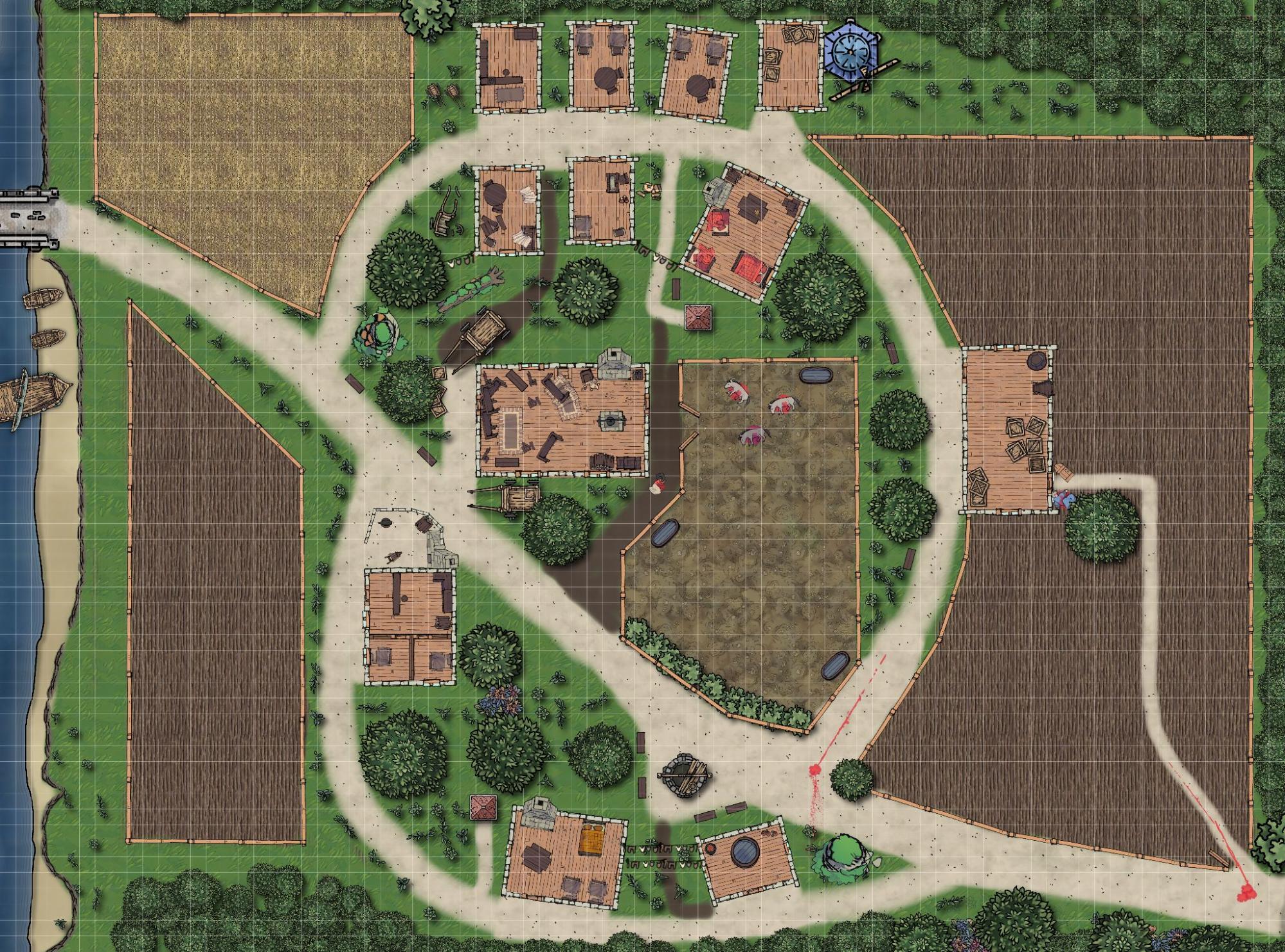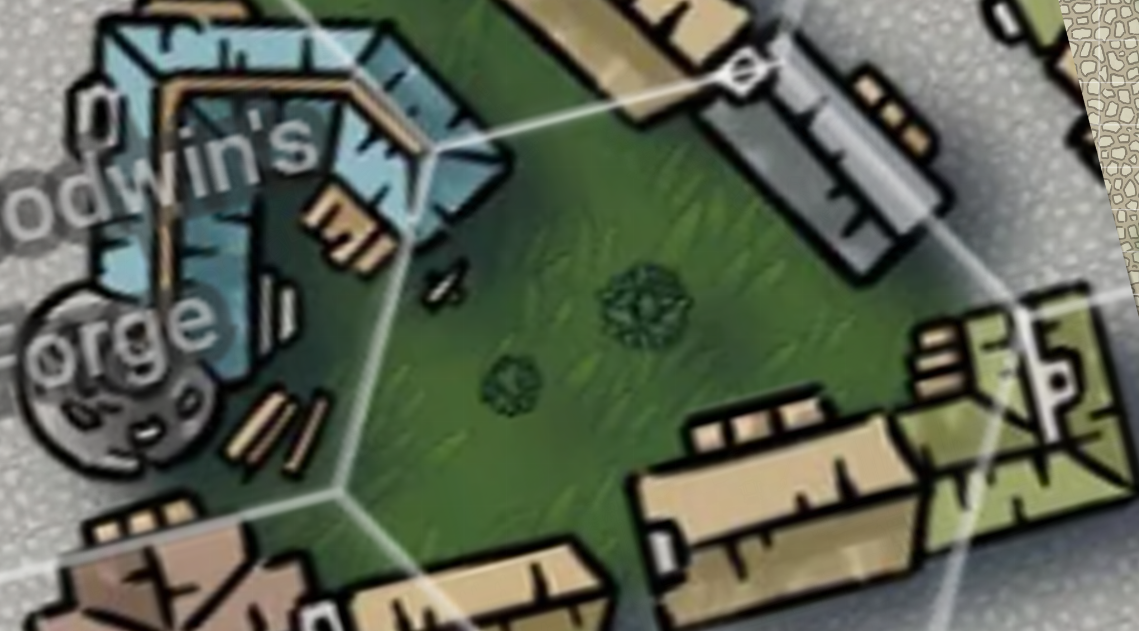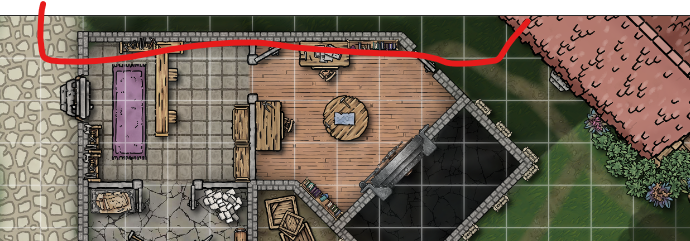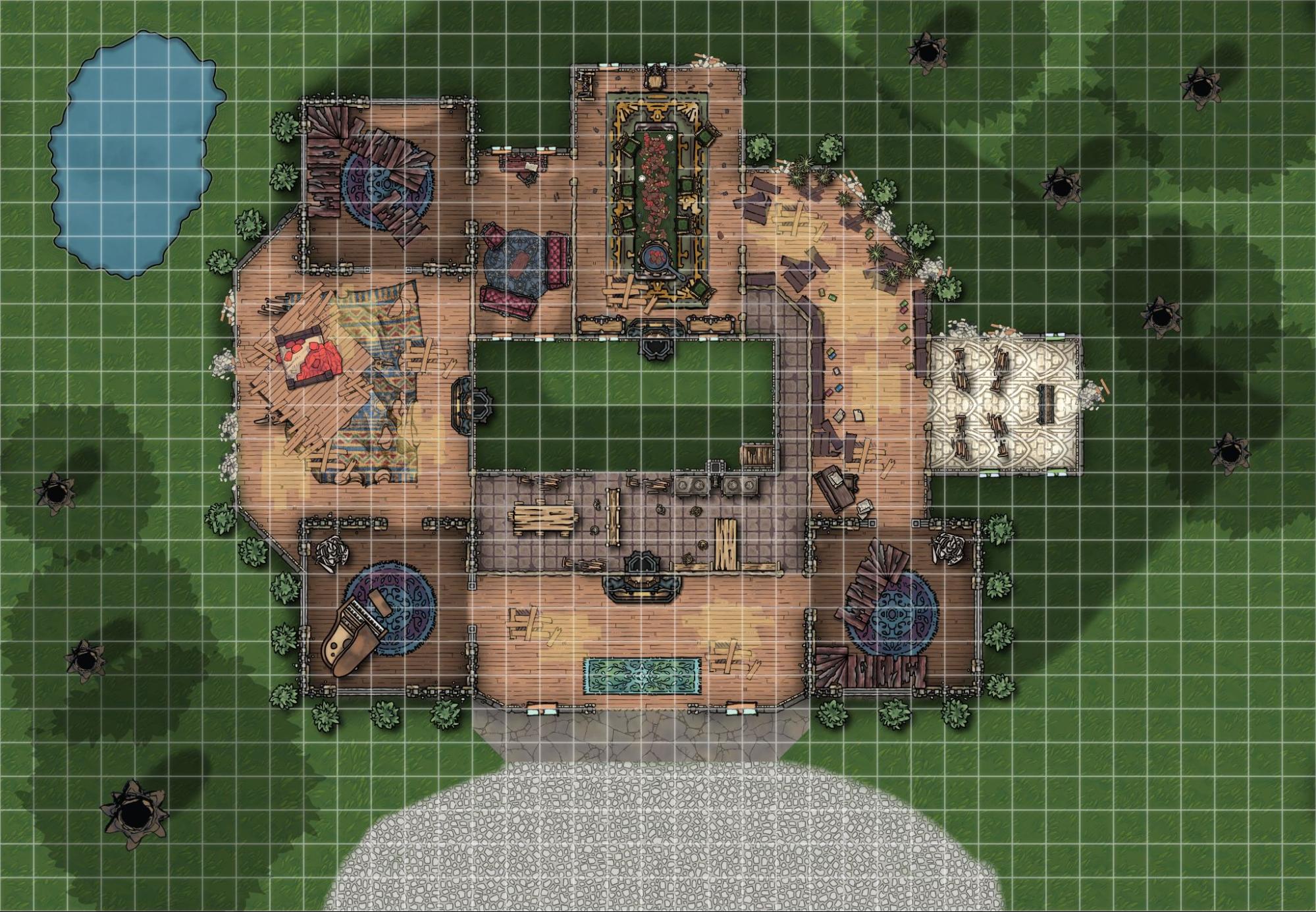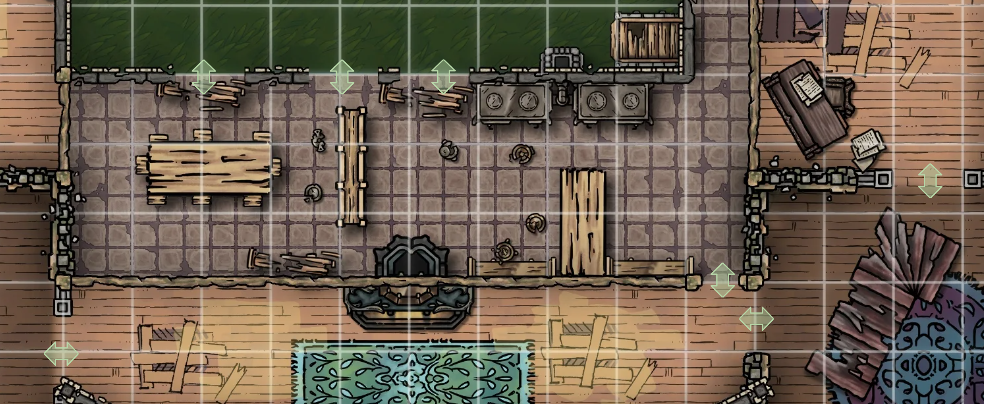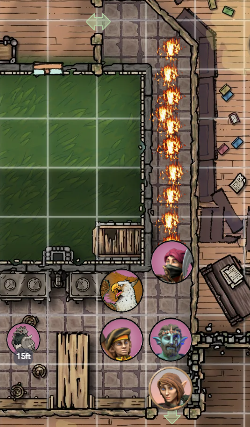For the next few weeks at Turn Order, we’ll be featuring dispatches from our very own Vrekais as he feels his way through running tabletop games for his own local playgroup.
The Encounter at Halen’s House
I am not a “random encounter” DM, not by a long shot. I’ve only been DMing regularly for about a year and a half now, but every encounter I plan for has some logic and reasoning behind it, some from within the game and some from without. This encounter was always going to be the big fight to end a series of smaller encounters spread out across a small village. Why was the village being attacked by Gnolls? Partly because in world it’s on the outskirts of a dangerous forest, partly because the events in the world up that point had resulted in the movements of guards and militias to important places, but also because two of my players had “Save Village From Gnoll Attack” as goals for the campaign based on their backstories. These goals are called Prophecies, part of the Heroic Chronicle system the Explorer’s Guide to Wildemount uses to really establish characters into the setting. It gives them allies, rivals, local knowledge, some key life events, and lastly the aforementioned Prophecies. I love this system as it lets me string these goals together into a web that I can then call a narrative if I’m feeling fancy.
So we had the reason established for this fight now I needed to go about designing the thing. My designs for this actually went through a few different variations based on how exactly I was going to fit the fight onto my table. The very first version of a Halen map was of a small portion of the village that was covered in roaming Gnoll packs.
The party would arrive at the bottom right corner and slowly make their way across this map, looking for survivors and avoiding or defeating Gnolls. I actually got pretty far with this approach and design before entirely abandoning it for a few different reasons.
Firstly this map is far larger than any map I can currently display statically on the small screen I use for DND Encounters. The max grid I can fit on that screen is 27 x 15, and this map is closer to 80 x 60. I could obviously just pan the map on the screen as the players moved but that added a whole set of complications if we used the paper minis we like, and using minis is I think a big part of what I love about in person play. Here’s an example of a map from an earlier encounter combining minis and some 3D terrain pieces I made.
Secondly while I did have ideas to address this panning issue, none seemed quite right. The main idea I had was to lock the view at a certain set of squares whenever fighting was occurring, get the minis out for the fight, then if fighting stopped scoop them off to go back to exploring. I really got in my own way with this solution though as I really seemed like any amount of fighting was just going to attract Gnolls from outside of the small portion visible and the whole fight might take place in one chunk of the map.
So I decided that I needed something different, a new approach.
Thus Was Born Halen 2
A much larger village at none mini scale using an entirely different grid. The idea being that this would be the overworld map to my encounters “battle maps”, a very OG Pokemon approach to the differing scales. I then populated my little village with goals and tasks for the party to do. There were packs of Gnolls still but now they were 100s of feet apart and could be dealt with in separate encounters. There was a group of looters trying to take advantage of the chaos to run off with what they could steal from the local blacksmith. A town Cleric looking for help getting his town people into the refuge of the temple but also after help finding his wife and children stuck hiding in the village.
It was all very much set up to be a full by the book “adventuring day”, one that took about 9 hours over 4 sessions for my party to complete. Now that I had my town though I needed my battlemaps, to create these I probably took a rather more literal approach that many might expect. I cut out areas of my map that I wanted to make a battle map for, and uploaded those into Inkarnate (the map making software I use, see a future article on this from me soon) so that I could then literally trace over the buildings I’d placed on my overview map. It looked something like this.
Whilst this idea worked in terms of taking overworld locations and making a 1:1 battlemap I learned a lot in the actual using of this map that I think I’d iterate on now if I were to run a combat encounter on it again.
Improving a Map with Hindsight
The maps I made for this arc of encounters needed to be approachable from any direction, there could be not set “party starts here” spot, but what I didn’t consider is that I should make the map have clear routes around it rather than just through it.
This area ended up very vague and confusing for the players.
Is it an alleyway? Are there other routes out? They don’t know and I didn’t think to describe them. Can the Looters robbing this place escape that way? All of this could have been communicated by the map rather than me and it’s just not there.
At several places navigating from one area of space on the map presumed there was off map space to fit through, something that could have been avoided with some small changes. Whilst these issues were quickly evident when running the map their cause was being far too rigid with my 1:1 to idea for Overworld to Battle Maps.
If I was to use this map again I’d make the following adjustments.
The top alleyway is now far more obvious a path way removing the ambiguity of what’s possible for friend and foe on that run. The bushes at the bottom left now present a more clear escape route but with a clearly communicated obstacle to their use. I also made the desire paths between the back doors of these buildings far more clear and added another to the small kitchen/cafe type building on the right hand side. Should they decide to try and run through these places rather than around them! Lastly the repositioned buildings remove almost all instances of presumed off map space to squeeze around making it far clearer to the players where they can go and also making approaching this map from different side work better.
That’s just the one map of this whole arc though, and I designed a whole bunch of these that my players could run into in different orders or maybe with or without any enemies to fight having moved on.
All of this planning though was working towards the final big fight in a ruined mansion on the outskirts of the village, the eponymous Halen House.
Fitting a Stately Home into 27×15 squares
The keen eyed amongst you might have noticed that that map of Halen House is bigger than the max grid size I said my screen can accommodate. Here it is for those with eyesight closer to my own to spot the issue.
This original design I had intended to attempt my pan and freeze approach when fighting broke out but a few tests with the number of mobs I was intending to field told me that the very same issue as before was likely to occur; any fight that started was unlikely to end with time to move to a different view. I still wanted this house to feel bigger than any other map they’d fought on before but I still had the same limitations as ever. Even with tricks such as having all the stair cases ruined, and the upper floors having fallen through, all to avoid any notion of a upstairs the map was going to feel a bit less stately than hoped. I contemplated printing the map out but decided against that as using a VTT provides accessibility tools that improves one of my player’s ability to see what’s happening significantly by having their own Tablet view of the battle they can zoom in on.
So Instead I Squished the House
I took what I’d designed and with a bit of room rotating and geometry tweaks I got the vast majority of the house to fit in the 27×15 I can display on my map screen, as shown below in the red box.
I wanted to highlight for my players that there was space outside of the map and what it was like so I started out zoomed out with areas inside the house hidden to give them a sense of scale. I also added markers in the VTT software I use called Owlbear Rodeo to highlight all the points of entry between the outside and between the rooms.
Honestly I went into this encounter feeling pretty confident that the map would work well and we’d have a thrilling battle clearing one one after another of the Gnoll infestation.
Well That Didn’t Happen, Did It
The players via their actions in the town had secured plans and keys to approach the house via a locked secret tunnel that led to the central courtyard of the house. A courtyard that really should have had more ways in and out of it but, Halen, whoever they were, they only liked to look at this courtyard. The only people with access to it would be the staff via the kitchens. That was what they wanted and that’s what was built. Yes I’m blaming fictional characters for my own mistakes. Upon realising this my players quickly hatched a two prong plan.
- The echo knight of the party would manifest their ethereal echo directly in front of the biggest bad guy they could see at the large banquet table and immediately unleash 7 attacks (via Action Surge, off hand attacks, and some Echo Knight abilities) taking this built up menace from 90HP to 4HP in a single turn.
- The bard and artificer would block one way into the kitchens to the south with furniture and an immovable rod, and then cover the only other way, a narrow servants passage on oil and grease and light it on fire. With a fire damage resistant barbarian waiting at one end (taking fire damage to keep Rage going), with ranged player characters behind her waiting for pot shots.
It was carnage.
As far as the Gnolls knew they were being attacked by a ghost and the only indication of something to fight back against was at the other end of a burning passageway. I consider myself lucky to have players that found “solving” this combat as rewarding as they did because otherwise I was worried I’d accidentally design the dullest combat of all time. Instead I got the classic, “thanks for designing a fight where I got to make use of that feature I love so much” praise. The features here being mostly, entering locked rooms with a ghost that kills people, and lighting things on fire. They eventually removed their barricade to start hunting down the leftovers once murder hallway had done her lot.
In Conclusion, Check Your Maps for Murder Hallways.
This is my first article about my experiences as a new D&D 5E DM and this article is about things I’m getting right and wrong now, murder hallway was only days ago! Stay tuned for more D&D DM content from me in the future covering lots of aspects of the hobby from map making in Inkarnate, using VTT software like Owlbear Rodeo, trying out portable screens and DMing from a Chromebook and more.

